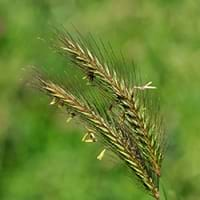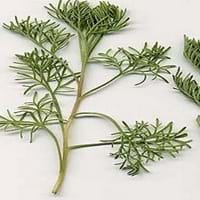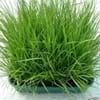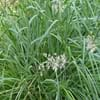Life Span
Perennial
Perennial
Origin
North America, South America, Europe, Southern Africa, Asia
Southern Europe
Types
Not Available
not available
Habitat
meadows, Pastures, Wet lands
Temperate Regions
USDA Hardiness Zone
Not Available
5-8
AHS Heat Zone
Not Available
8-5
Sunset Zone
Not Available
2b, 3a, 3b, 4, 5, 6, 7, 8, 9, 10, 11, 12, 13, 14, 15, 16, 17, 18, 19, 20, 21, 22, 23, 24
Habit
Not Available
Upright/Erect
Flower Color
Yellow Brown
Yellow, Gray
Flower Color Modifier
Bicolor
Not Available
Fruit Color
Not Available
Non Fruiting Plant
Leaf Color in Spring
Green, Light Green, Blue Green, Gray Green
Gray Green
Leaf Color in Summer
Light Green
Gray Green
Leaf Color in Fall
Not Available
Gray Green
Leaf Color in Winter
Not Available
Not Available
Leaf Shape
Oblong
Long hair-like leaves
Plant Season
Not Available
Spring, Summer, Fall
Sunlight
Full Sun
Full Sun
Type of Soil
Loam, Sand
Loam
The pH of Soil
Not Available
Neutral
Soil Drainage
Well drained
Well drained
Bloom Time
Spring, Summer
Late Summer
Tolerances
Deer resistant, Drought, Salt
Not Available
Where to Plant?
Ground
Ground, Pot
How to Plant?
Seedlings
Cuttings, Seedlings
Plant Maintenance
Medium
Medium
Watering Requirements
Keep the ground moist but not water-logged
Average Water Needs, Keep the Soil well drained
In Summer
Less Watering
Lots of watering
In Spring
Moderate
Moderate
In Winter
Lots of watering
Average Water
Soil pH
Not Available
Neutral
Soil Type
Loam, Sand
Loam
Soil Drainage Capacity
Well drained
Well drained
Sun Exposure
Full Sun
Full Sun
Pruning
No pruning needed in the early stages, Remove damaged leaves, Remove dead branches, Remove dead leaves
Cut back old stems to the ground, Remove damaged leaves, Remove dead branches, Remove dead leaves
Fertilizers
avoid high rate of nitrogen in spring, Nitrogen
All-Purpose Liquid Fertilizer, Complete balanced fertilizer
Pests and Diseases
Fungal Diseases, Head smut, Leaf rust, Stem rot
Free of serious pests and diseases
Plant Tolerance
Deer resistant, Drought, Salt
Drought
Flowers
Not Available
Insignificant
Flower Petal Number
Single
Not Available
Edible Fruit
Not Available
No
Foliage Texture
Fine
Medium
Foliage Sheen
Matte
Matte
Attracts
Bees, Birds, Butterflies
Not Available
Allergy
Not Available
Skin irritation
Aesthetic Uses
Ground Cover
Farmland, small hedge, Wild gardens
Beauty Benefits
Improve skin condition
Not Available
Environmental Uses
Erosion control, Food for animals, soil stabilisation
Air purification
Medicinal Uses
Not Available
Antiseptic, Digestive, Liver problems, Skin Disorders, Tonic
Part of Plant Used
Seeds
Branch, Fibres, Flower Stalk, Gum, Leaves, Twigs
Other Uses
Food for animals
Oil is used in mosquito repellents, Used for fragrance, Used to make hair tonic
Used As Indoor Plant
No
No
Used As Outdoor Plant
Yes
Yes
Garden Design
Cutflower, Dried Flower/Everlasting, Edible, Wildflower
Herb, Vegetable, Mixed Border, Rock Garden, Wall
Botanical Name
Hordeum brachyantherum
ARTEMISIA abrotanum
Common Name
Meadow Barley
lad's love , southern wormwood , old man , boy's love , appleringie , sitherwood
In Hindi
meadow barley
southernwood
In German
Wiese Gerste
Eberraute
In French
orge prairie
aurone ou citronnelle
In Spanish
cebada prado
Artemisia abrotanum
In Greek
λιβάδι κριθάρι
Artemisia abrotanum
In Portuguese
cevada prado
Abrótano
In Polish
łąka jęczmienia
Bylica boże drzewko
In Latin
pratum hordei
Southernwood
Phylum
Magnoliophyta
Magnoliophyta
Class
Liliopsida
Magnoliopsida
Order
Cyperales
Asterales
Family
Poaceae
Asteraceae
Clade
Angiosperms, Commelinids, Monocots
Angiosperms, Asterids, Eudicots
Tribe
Not Available
Anthemideae
Subfamily
Not Available
Asteroideae
Number of Species
Not Available
Not Available
Importance of Meadow Barley and Southernwood
Want to have the most appropriate plant for your garden? You might want to know the importance of Meadow Barley and Southernwood. Basically, these two plants vary in many aspects. Compare Meadow Barley and Southernwood as they differ in many characteristics such as their life, care, benefits, facts, etc. Every gardener must at least have the slightest clue about the plants he wants to plant in his garden. Compare their benefits, which differ in many ways like facts and uses. The medicinal use of Meadow Barley is Not Available whereas of Southernwood is Antiseptic, Digestive, Liver problems, Skin Disorders and Tonic. Meadow Barley has beauty benefits as follows: Improve skin condition while Southernwood has beauty benefits as follows: Improve skin condition.
Compare Facts of Meadow Barley vs Southernwood
How to choose the best garden plant for your garden depending upon its facts? Here garden plant comparison will help you to solve this query. Compare the facts of Meadow Barley vs Southernwood and know which one to choose. As garden plants have benefits and other uses, allergy is also a major drawback of plants for some people. Allergic reactions of Meadow Barley are Not Available whereas of Southernwood have Skin irritation respectively. Having a fruit bearing plant in your garden can be a plus point of your garden. Meadow Barley has showy fruits and Southernwood has no showy fruits. Also Meadow Barley is not flowering and Southernwood is not flowering . You can compare Meadow Barley and Southernwood facts and facts of other plants too.





